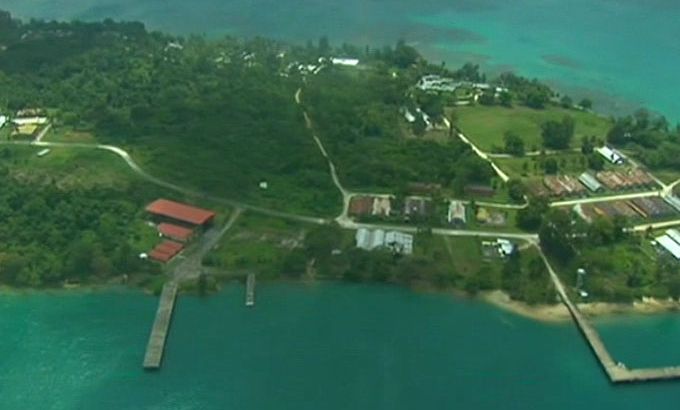Analysis: Behind Australia’s asylum plans
Decision to fly asylum seekers to Nauru means genuine refugees will find it tougher to make their case.

Christmas Island and Nauru are – superficially – very similar. Both are small dots in the ocean, hundreds of kilometres from the nearest land. Both are hot, sticky and sun-drenched. Both have phosphate mines and both are home to unusual species of crab.
But there the similarities end and one crucial difference emerges. Christmas Island – though thousands of kilometres off the mainland’s north-west coast – is Australian territory. Nauru – slighly closer to Australia’s north-east – is not.
This explains why, this year alone, almost 10,000 asylum seekers have set sail for the former – and why some of them will be furious when, next week, they are flown to the latter.
Australia has a problem many countries might want to have. It’s a very nice place to live, with – until recently at least – a humanitarian approach to the world’s most needy. Anyone who claims asylum on Australian soil – and Christmas Island counts – is given the chance to prove they are a genuine refugee. Those who succeed have, in the past, been given the right to stay anywhere in Australia .
This is what the United Nations expects: Australia has signed the Convention on Human Rights. But it’s politically problematic as the number of asylum seekers have risen quickly.
Australians are a compassionate bunch. But they dont like taking in refugees less deserving than others.After all, there are plenty of refugees in the world who can neither afford nor manage to get to the Indonesia coast and jump on a rickety boat to set sail for Australian soil.
Australians recoil, too, at images and stories of horror at sea; rickety boats sometimes sink. Well over a thousand people are thought to have died trying to come by sea to Australia. The clamour to do something has produced a number of false starts.
But now there’s action. On Nauru.
New plan
The plan is that, instead of automatically being considered for asylum in Australia, boat arrivals will be flown straight to Nauru, outside Australia’s jurisdiction. Their asylum claims will still be considered, but through a process run by the United Nations, not Australia. That process could take years. And although the details are still vague as to how it will legally achieve this, Australia’s government insists it will be under no obligation to give provide sanctuary even to those found to be genuine refugees.
The message is meant to sound tough. And the camp in Nauru looks like it. In one of the hottest, most humid spots on an already hot, humid island stand about 20 tents. Each will sleep five men. There’s an open-sided recreational hall and a few plaster-board shacks for toilets. This will eventually be home for 500 people – for weeks, months, potentially even years.
Nauru – the world’s second smallest country – welcomes the camp. Australia is its biggest benefactor, so it owes the regional super-power a few favours; anyway, the camp will generate jobs and money just as the last one did.
From 2001 to 2008, exactly the same thing was tried. As a deterrent it seemed to work: for the Nauruans, perhaps too well. As the number of boats heading to Australia dropped off, a new Labour government decided the Nauru camp was unnecessary and cruel. It closed it; the Nauruan economy took a big hit.
But will the same trick work twice? Almost all those found to be refugees on Nauru last time around did, in fact, get residency in either Australia or New Zealand. Whatever politicians say, it’s hard to see how that won’t happen again this time around. Deterrence only works if people believe the deterrent is real.
There is, though, some evidence that Australia is being taken seriously by the people affected the most. In recent weeks, since the new policy has been announced, the number of boats travelling to Australia has actually risen. Australia’s home affairs minister puts that down to people-smugglers holding a “closing down sale”: “Get a bargain trip now – quick! – before they’re gone for good!”
And once they are gone? Australia will consider it job done; fewer people will attempt the perilous journey by sea; fewer will die trying.
But, beyond Australia’s borders, people who Australia would once have judged to be genuine refugees won’t be able to make their case. Suffering will disappear from Australian TV screens, but out of sight it will remain as real as ever, and lives that would once have found a purpose in Australia will be lived in limbo instead.